The 2-3-5 formation has become one of the most common attacking shapes in elite football. What was once the dominant structure of the early 20th century has returned, not as a static base formation, but as a dynamic in-possession shape that reflects the principles of positional play.
At its core, the 2-3-5 is about:
- Compactness in possession — more players in central zones, closer distances between them, shorter passing options.
- Full lane occupation — stretching the opposition across the width of the pitch while maintaining multiple layers of depth.
- Rest-defence balance — securing immediate counterpressing options through well-positioned midfielders.
For coaches, scouts, and analysts, understanding this structure requires going beyond simply recognizing the shape. It’s about grasping the rotations used to create it, the advantages it generates in different zones, and the risks it leaves in defensive transition.
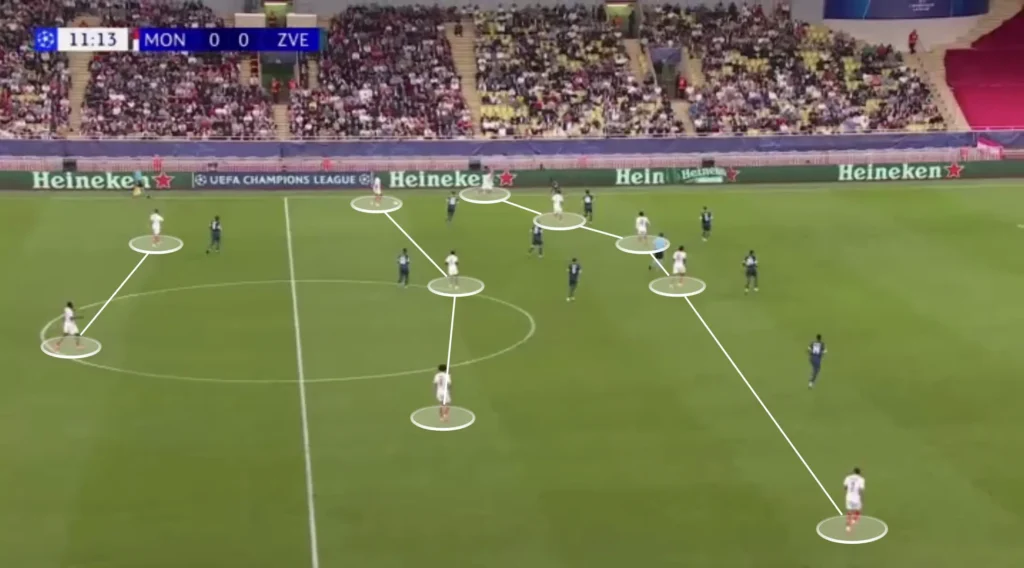
Creating a 2-3-5 Shape
Most teams that use the 2-3-5 don’t line up that way on paper. They create it dynamically from a base such as a 4-3-3 or 4-2-3-1.
There are several ways to reach this:
1. Pushing Fullbacks High, Inverting Wingers, Dropping Number Eights
- Fullbacks move up as wide attackers.
- Wingers tuck into the half-spaces as attacking midfielders.
- Number eights drop next to the pivot to form a three in midfield.
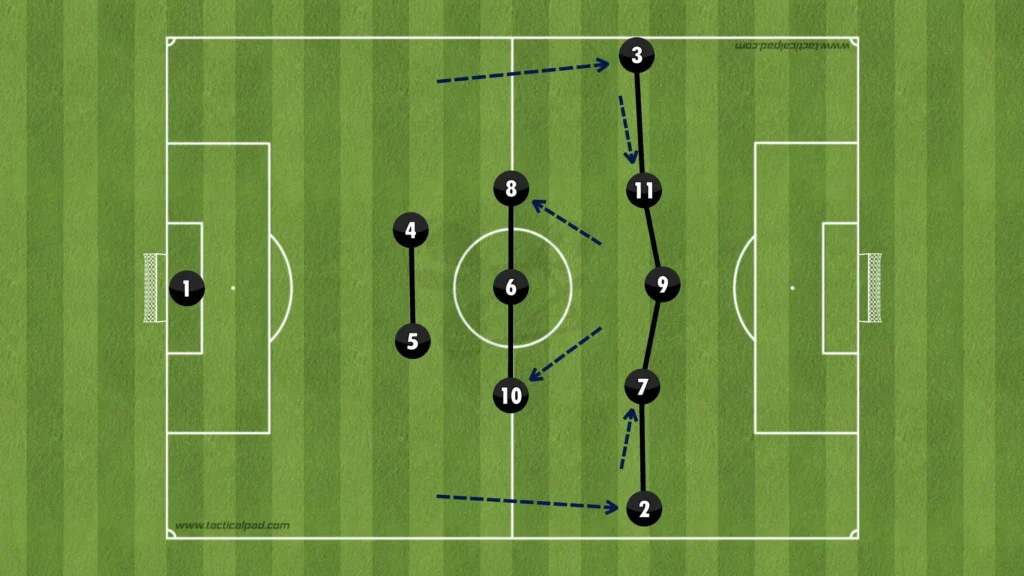
This often creates free fullbacks in advanced positions because opposition wide players rarely track them diligently. A diagonal ball to the onrushing fullback can instantly lead to a dangerous crossing opportunity.
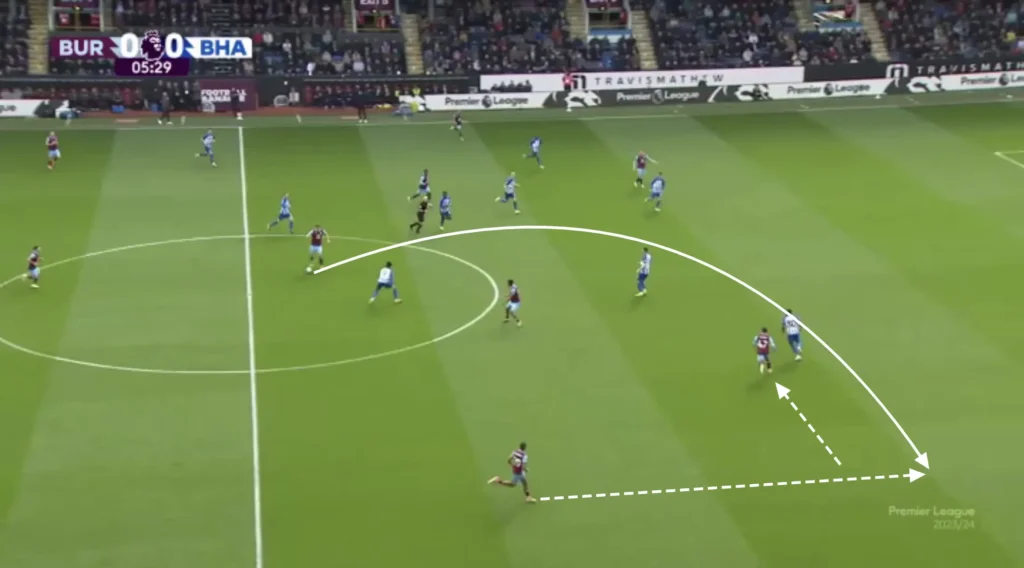
2. Inverting Fullbacks, Keeping Wingers Wide, Pushing Eights Higher
- Fullbacks move inside to play alongside the pivot.
- Wingers stay wide to stretch the pitch.
- Number eights advance into the attacking midfield line.
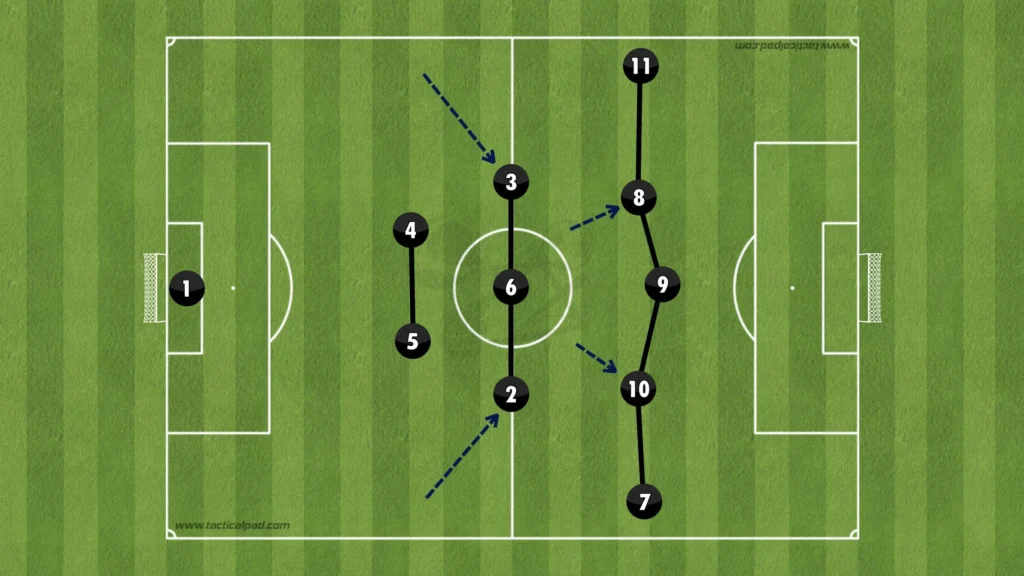
This rotation opens direct lanes from center-backs to wingers. Once the winger receives, the nearby number eight can combine to create 2v1 overloads against the opposition fullback.
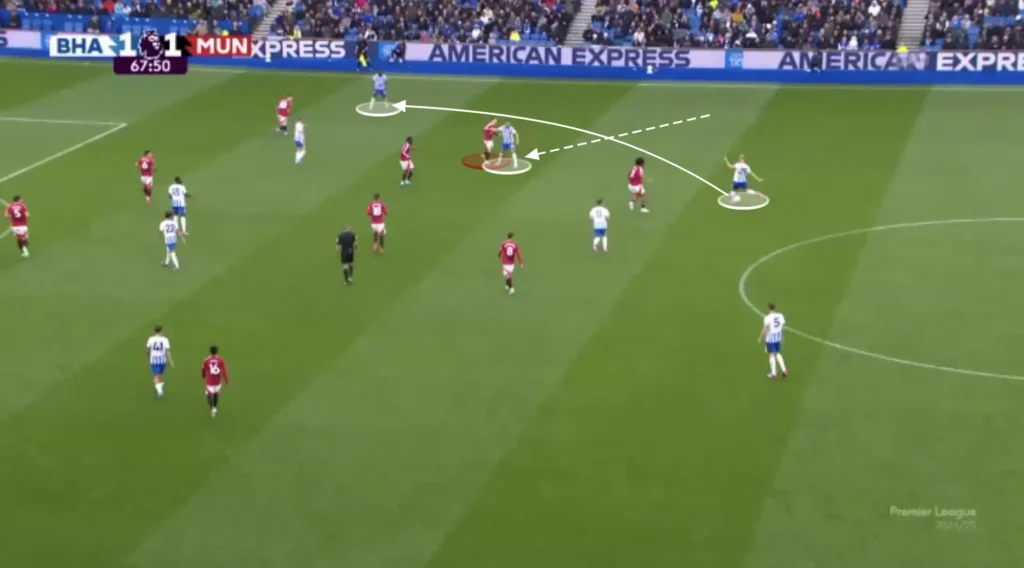
3. Hybrid Rotations
A common approach is to invert one fullback and push the other high, producing asymmetry but maintaining the same 1-2-3-5 structure. This fluidity makes it difficult for the opposition to find clear reference points and increases the chance of defensive errors.
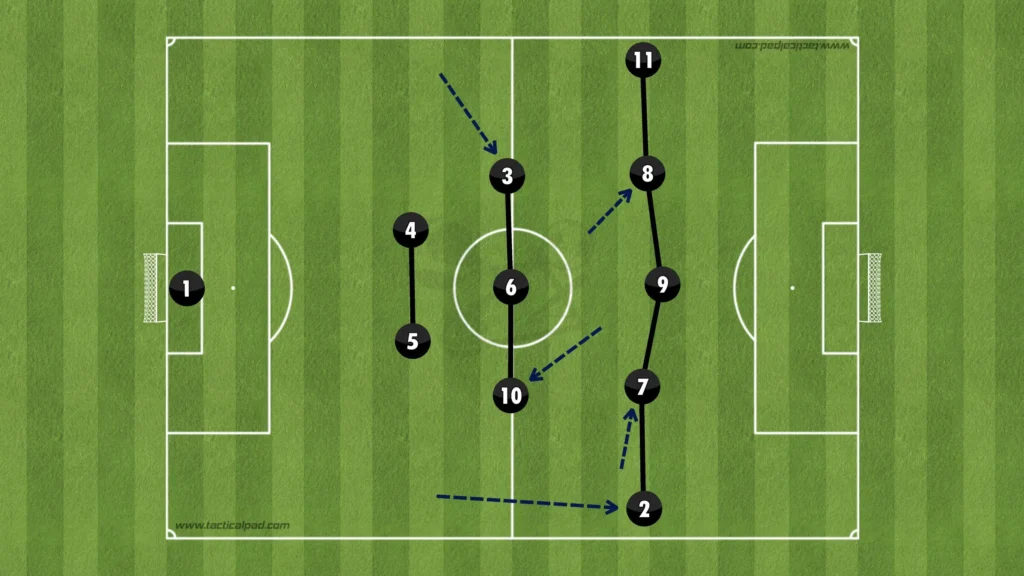
Compactness and Numerical Advantage in Midfield
One of the key ideas of the 2-3-5 is to minimize distances between players by placing most of them in central areas. With wingers holding width, the striker and interiors constantly shifting, and three midfielders close behind, the team will often create a numerical advantage in midfield.
- At least one midfielder will usually be free, forcing the opponent to choose between leaving space centrally or stepping up and opening gaps elsewhere.
- Shorter distances mean quicker ball circulation. Each pass takes less time to arrive, giving opponents fewer moments to step out and press effectively.
- This compactness allows smoother combinations, particularly vertical passes into dropping attackers or interiors turning in the half-spaces.
For analysts, this is why teams using the 2-3-5 should prioritize central progression. The overloads and short connections make the middle of the pitch the most natural pathway forward.
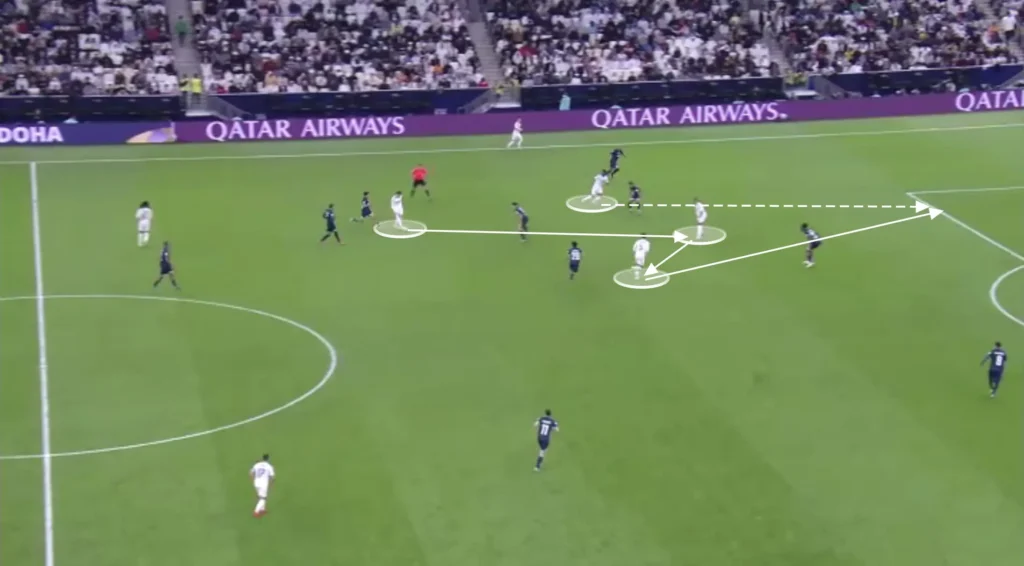
Finding the Pockets
A crucial attacking principle within the 2-3-5 is to find the interiors in the pockets — the spaces between the opposition’s midfield and defensive lines.
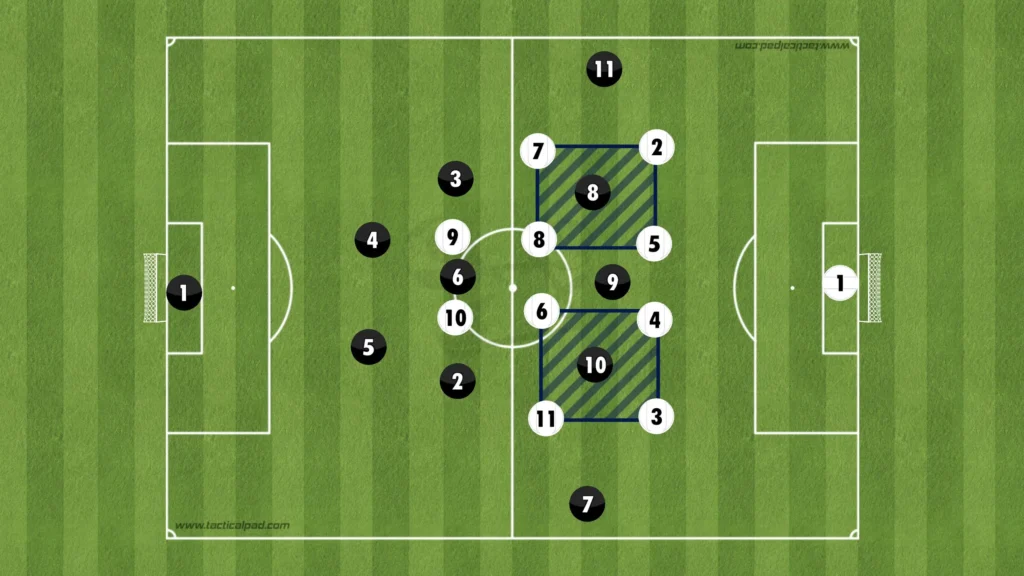
When an interior positions well in these pockets:
- They can receive on the half-turn, facing the goal.
- They force defenders into a dilemma: step out and leave space behind, or sit back and allow time on the ball.
- They connect quickly to strikers or wingers making runs, often serving as the link that breaks compact defensive structures.
If the opposition center-back steps forward to close the pocket, the striker can attack the gap left in behind. If the defender holds his line, the interior has space to drive forward or slip passes through. This is one of the clearest examples of how the 2-3-5 creates structural dilemmas for defenders.
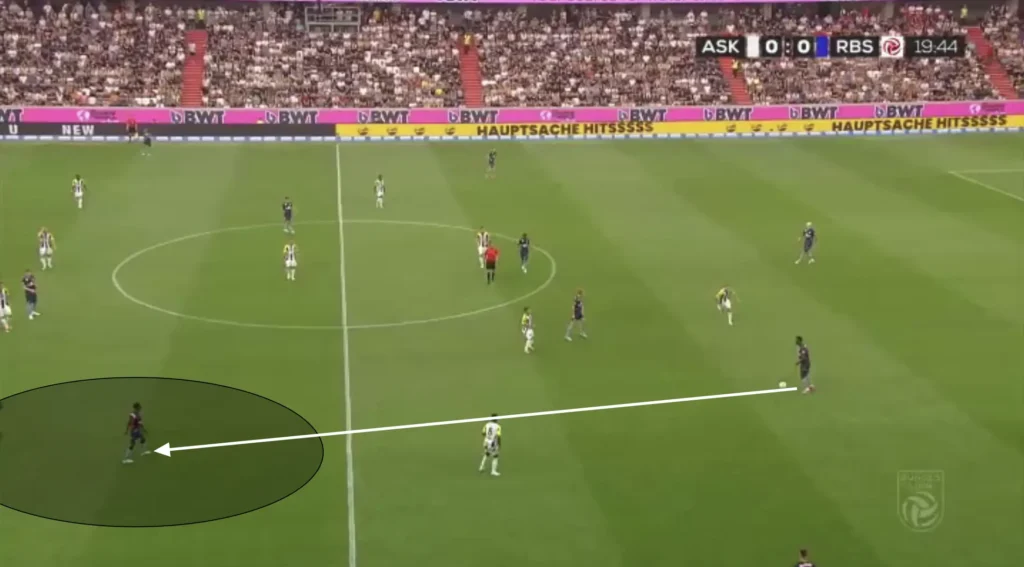
Numerical Advantage Against the Back Four
The front five in this formation is particularly effective against a back four.
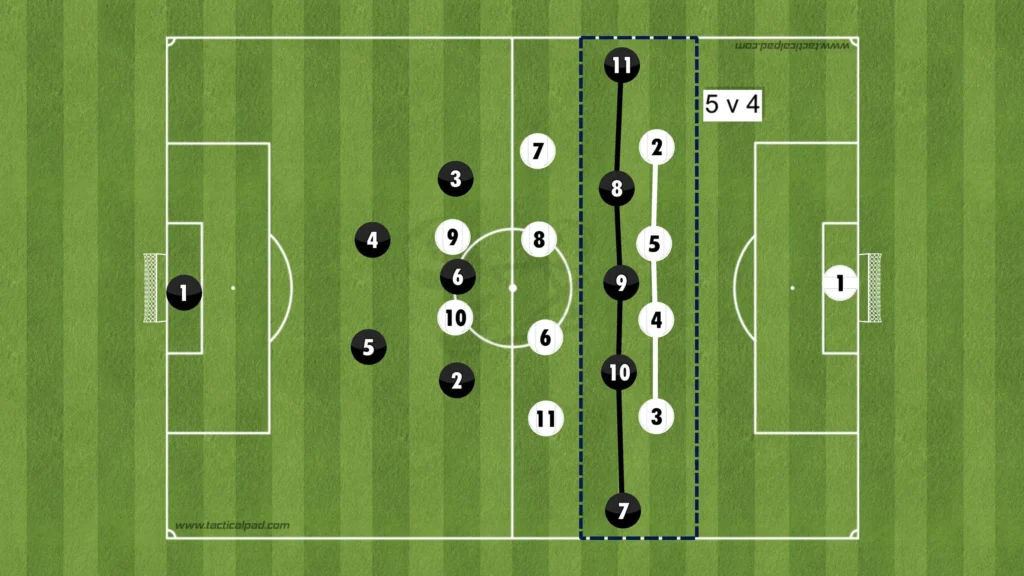
Structurally, the defenders cannot cover all five lanes:
- The striker locks the two center-backs centrally.
- The wingers pin the fullbacks wide.
- This leaves the interiors free in the half-spaces.
From here, several attacking patterns can emerge:
- Through passes into interiors who turn and drive.
- Diagonal switches to isolate a winger in a 1v1 or 2v1 situation.
- Runs in behind from interiors if defenders are drawn toward the ball.
This numerical mismatch forces opposition fullbacks into impossible choices: follow interiors inside and leave wingers free, or stay wide and concede access between the lines.
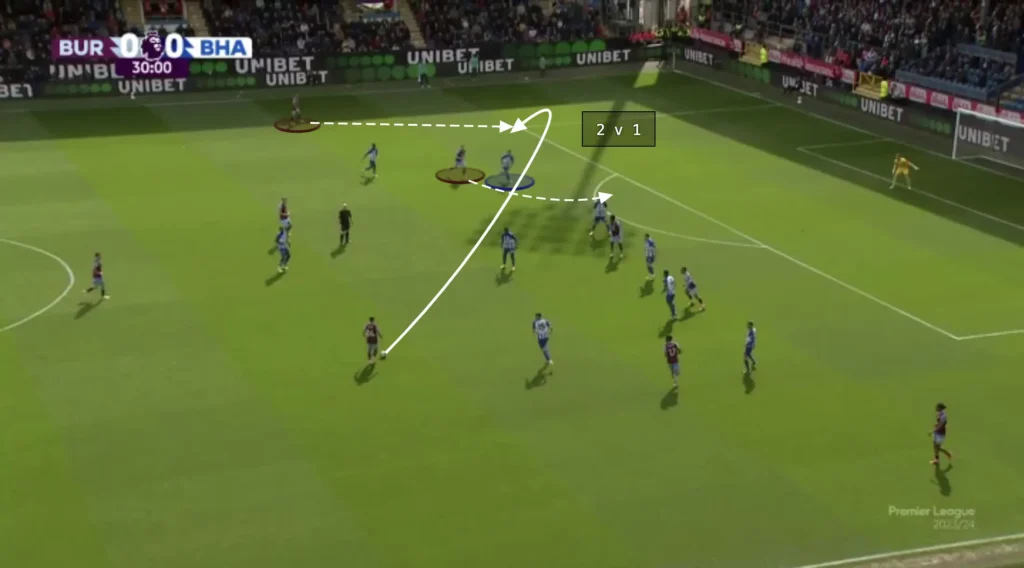
Attacking the Half-Space: Underlaps and Rotations
The half-space between a fullback and center-back is a prime area to exploit in the 2-3-5. One common mechanism is the underlap:
- The winger stays wide and attracts the fullback.
- The interior makes a run just inside the fullback, close enough to force the center-back into a decision, and receives a pass from the winger.
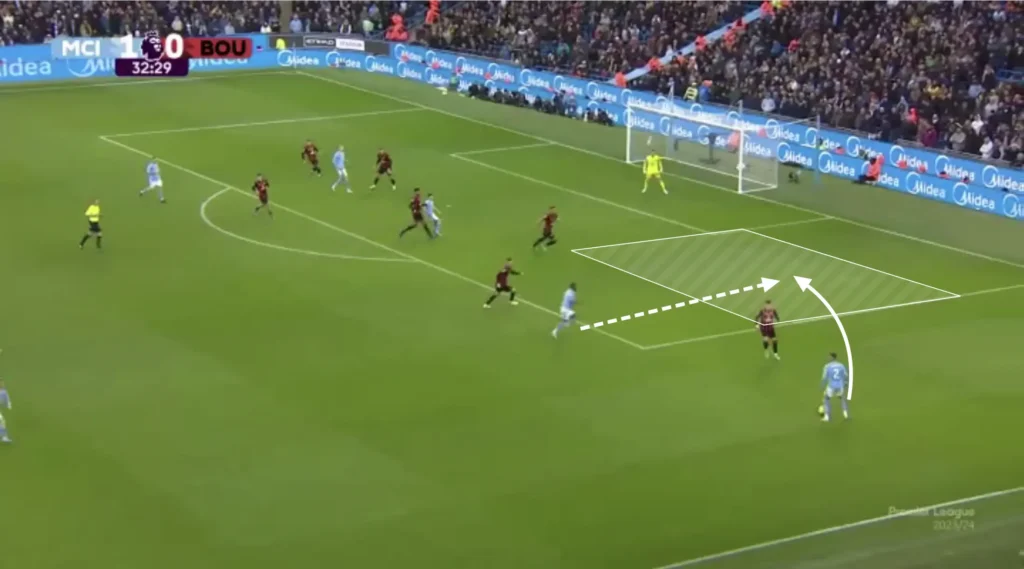
- If the center-back steps out, he vacates dangerous space in the center. If he stays, the underlapping runner receives freely.
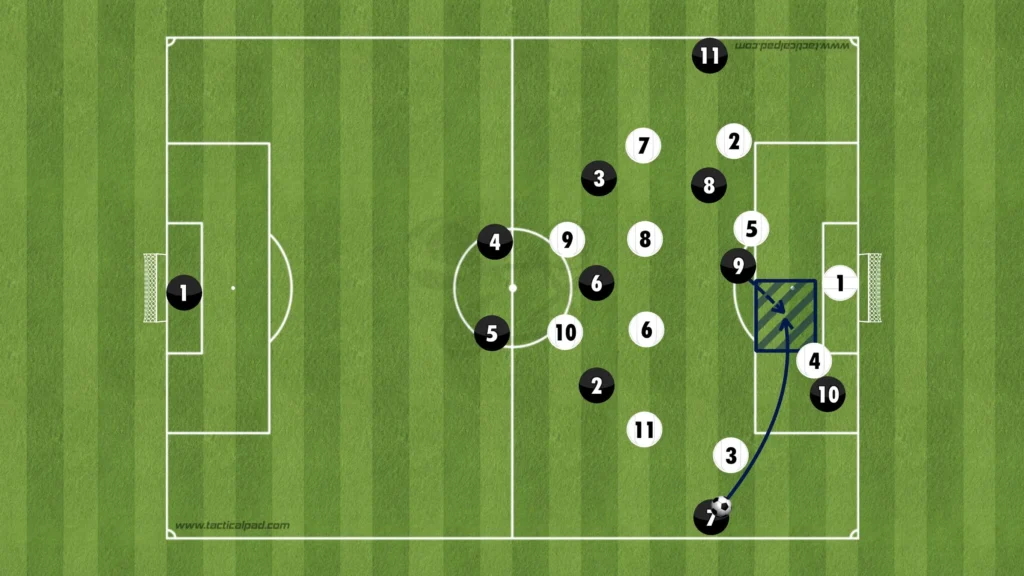
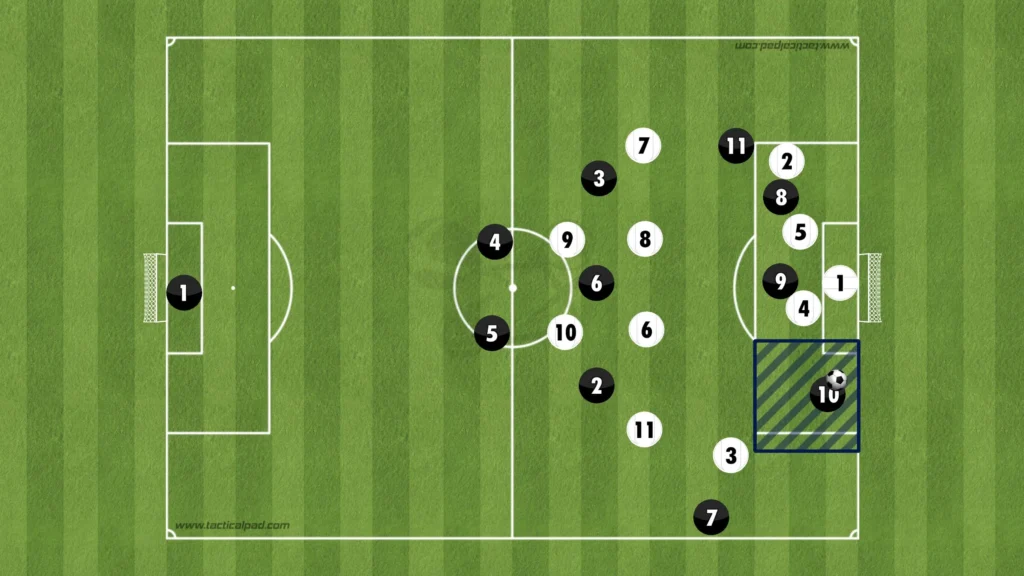
This often allows the runner to drive into the box without immediate pressure, creating a clear crossing angle. From there, the attacking side can deliver dangerous balls across the face of goal, frequently catching the defensive line disorganized.
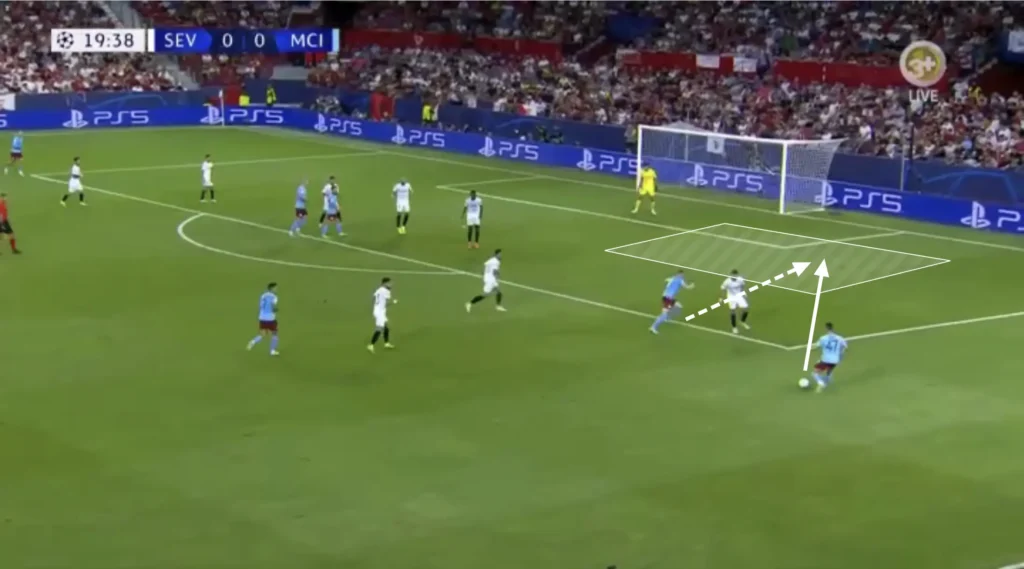
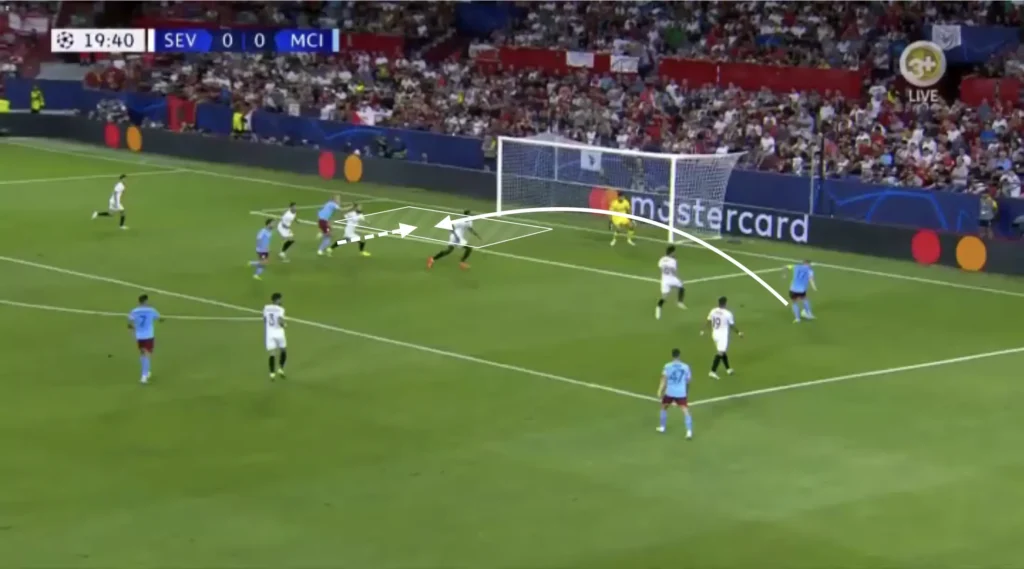
Even if the ball isn’t played, the run often drags a holding midfielder or defender out of shape, opening new central channels. In this situation, for example, Jude Bellingham makes an underlapping run that opens the space inside. Phil Foden sees this and takes the ball into the open space.
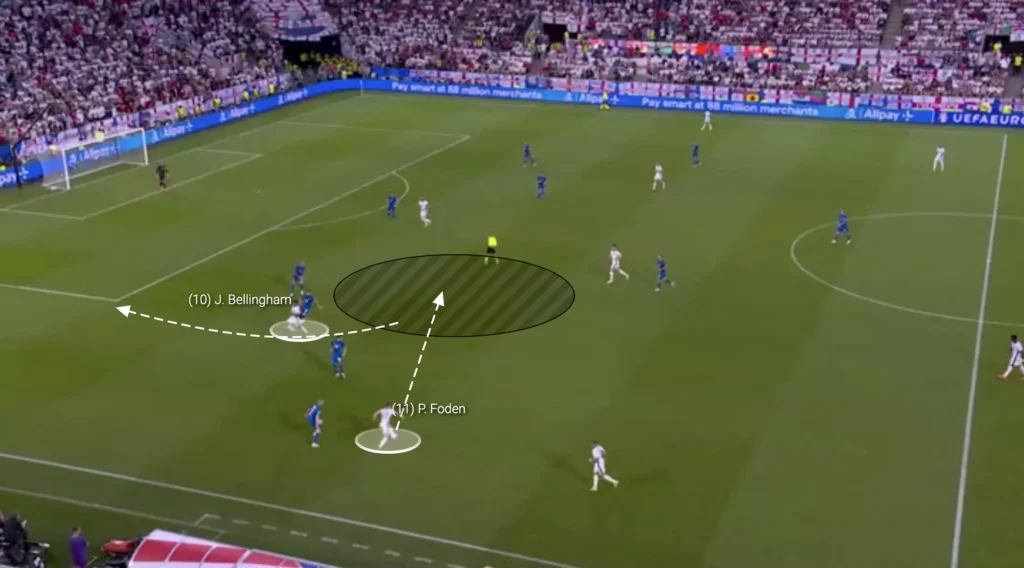
This layering of movements — winger wide, interior underlapping, striker central — embodies the structural superiority of the 2-3-5.
Rest-Defence and Transition Control
Perhaps the most underestimated aspect of the 2-3-5 is its rest-defence. The shape naturally positions three players — the pivot and two inverted fullbacks — directly behind the front five. Alongside the two center-backs, this creates a five-man shield in central zones.
When possession is lost:
- The three midfielders behind the attacking line — the pivot and two inverted fullbacks — are positioned perfectly to counterpress immediately after losing possession.
- Passing lanes are cut quickly due to compact central spacing.
- Opponents are often forced into rushed clearances, which the center-backs can recover.
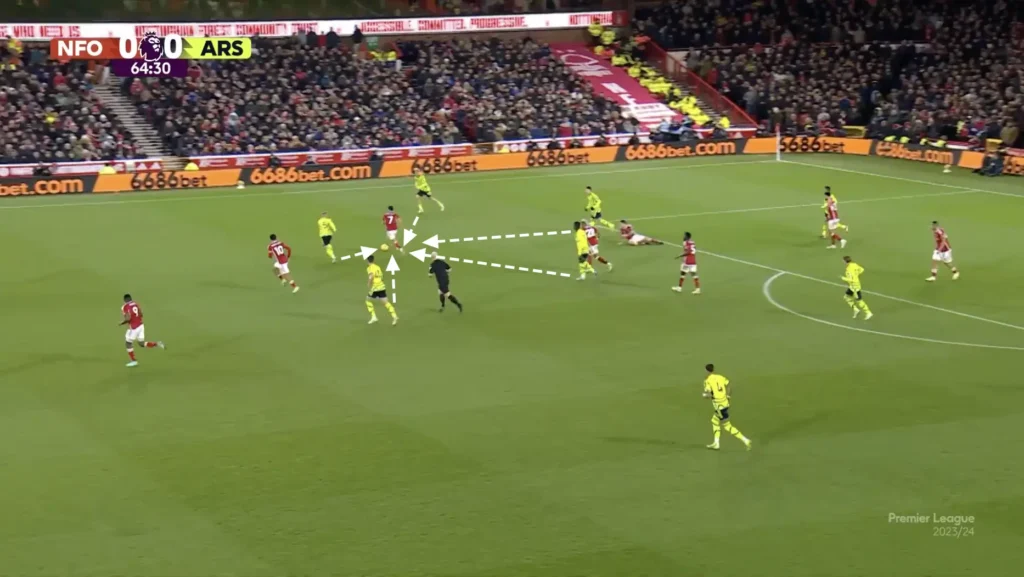
The risk comes if the counterpress is too slow or bypassed:
- Only two defenders remain covering depth.
- Wide spaces are exposed, since fullbacks have either advanced or inverted.
- Quick, accurate passes can create 2v2 or 3v2 transitional scenarios.
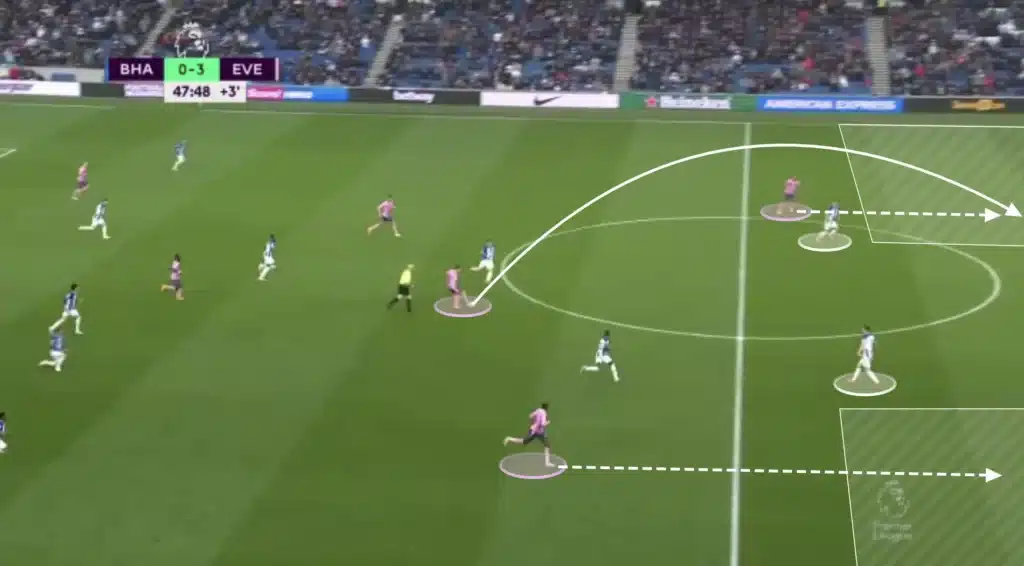
Thus, the 2-3-5 is a high-reward, high-risk structure. Its success depends heavily on collective pressing intensity and immediate reactions in transition.
Conclusion
The 2-3-5 is not just a nostalgic throwback; it is one of the most sophisticated attacking structures in modern football. By compressing distances in midfield, occupying all five lanes, and layering threats vertically, it generates constant dilemmas for defenders.
- It offers numerical superiority in midfield.
- It creates natural overloads against back fours.
- It provides rest-defence stability through compact central positioning.
But it also demands total synchronization: if rotations are mistimed or counterpressing is delayed, opponents can expose its wide vulnerabilities.
For coaches and analysts, the 2-3-5 is a clear reminder that positional play is about reference points as much as roles. The formation provides the framework; the players’ movements and decisions determine whether it becomes a weapon of dominance or a liability in transition.
